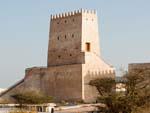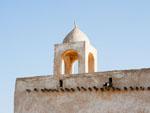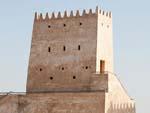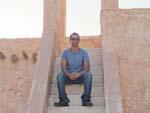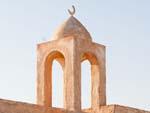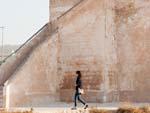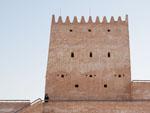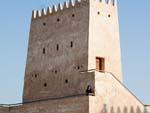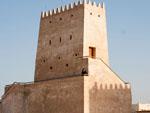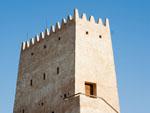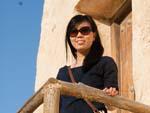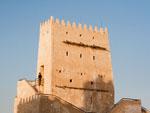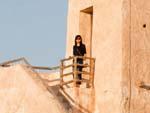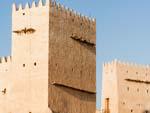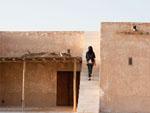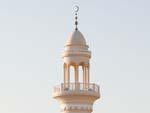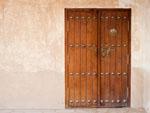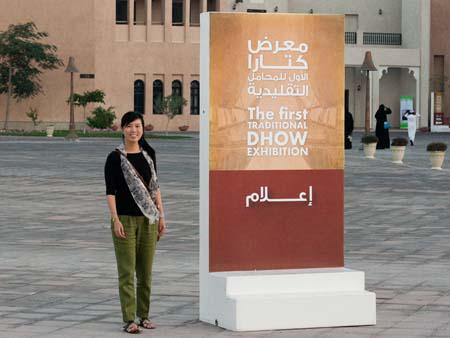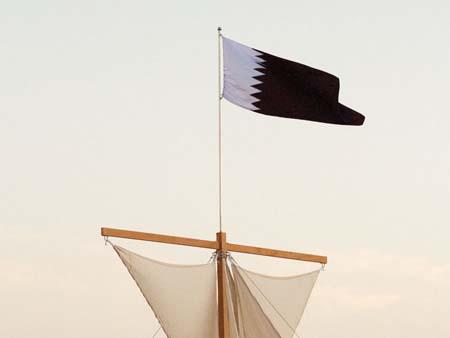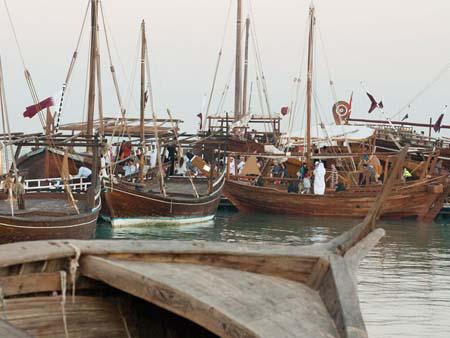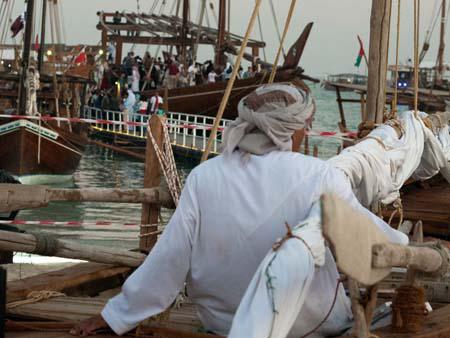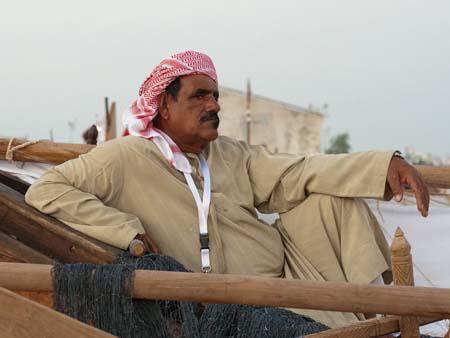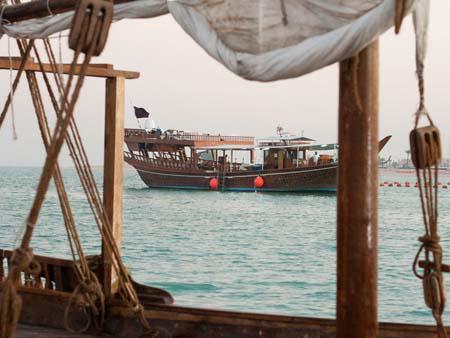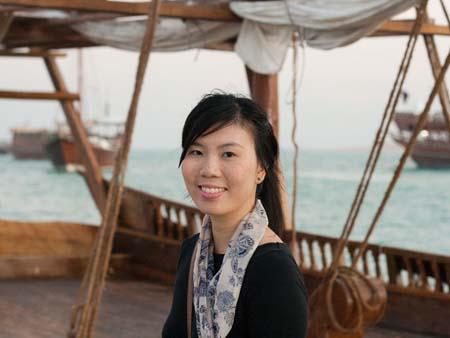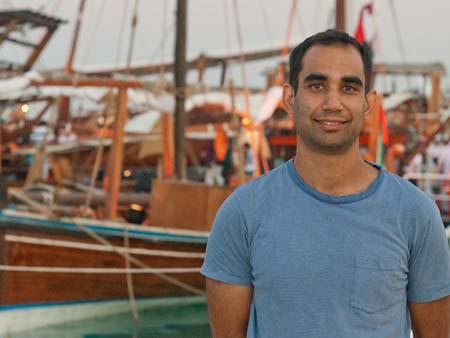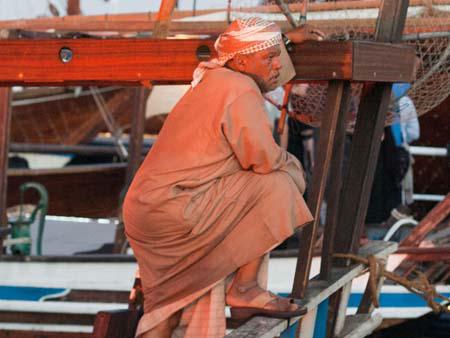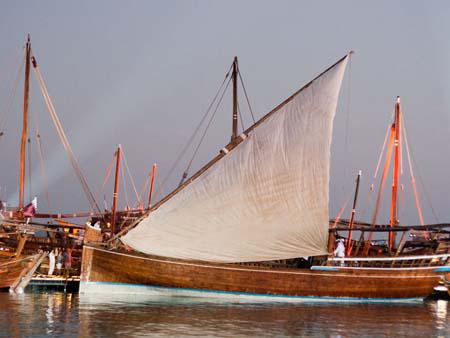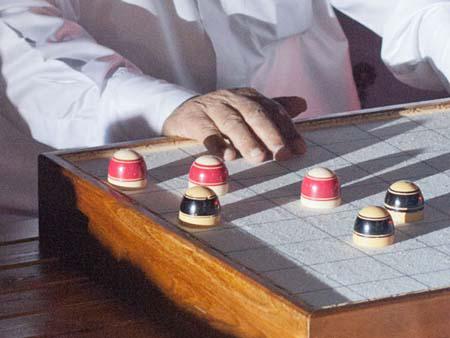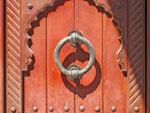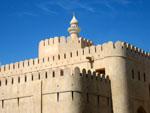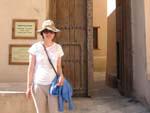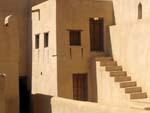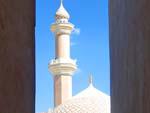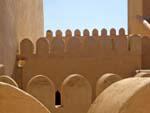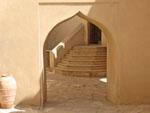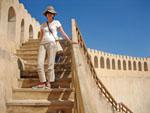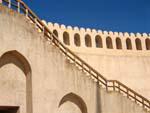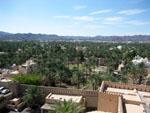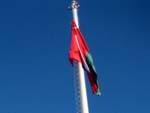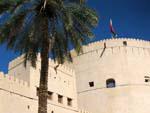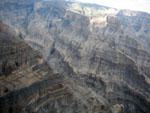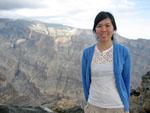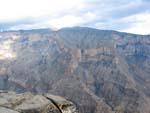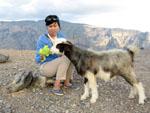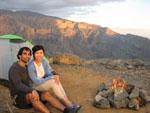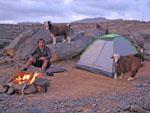From Sur we headed east along the Ash Sharqiyah coast through Ras Al Hadd, and then followed part of the Arabian Sea before heading inland.
Our accommodation for that night was the 1000 Nights Camp, located forty kilometres into the Wahiba Sands desert. After a lot of backtracking north-west into Oman, we reached the location marker, a Shell petrol station. From there we drove north passing Al Mintrib Fort, one of the last markers, we reached the last of the paved road, passing many tourist warning signs along the way. I deflated the tires to the recommended 18 psi, this was going to be interesting, I thought.
thydzikgooglemap(http://sonyaandtravis.com/maps/oman-2011-sur-to-wahiba-sands.xml,9)
The driving to the camp was easy, even though located deep within Wahiba Sands desert, the road was frequently travelled, with many signs and other cars to follow, we were glad to not have paid the 20 OMR for the escort service. The camp was located at the floor of a valley, though it was it the middle of nowhere, it was a surprise to see it offered, electricity (though temperamental), a swimming pool, luxurious glass windowed accommodation with balcony, mobile phone signal, and even wireless (though we couldn’t get it to work). Our accommodation for the night was a cosy Arabic Tent, which even had a single electric light.
thydzikgooglemap(http://sonyaandtravis.com/maps/oman-2011-wahiba-sands-1000-nights-camp.xml,s)
Prior to dinner, Sonya and I decided to do a bit of ‘dune bashing’, having never driven in the sand before, I was surprised how easy the four-wheel-drive made it, though I and especially Sonya were always uneasy with what I and the car would be capable of, and as we were by ourselves, I didn’t want to take too many risks.
Back at the camp we had a buffet dinner of various Omani dishes, with the highlight being the traditional Omani Shuwa (Showa), spiced lamb wrapped in banana leaves and then cooked in an earth oven for the whole day. After dinner we were treated to a performance of traditional Omani songs and dancing, which even got the camp guests participating.
In the morning we spent a little more time enjoying the desert dunes before heading north towards our next destination, Nizwa.

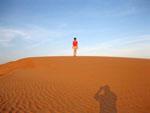
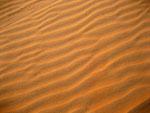
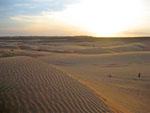
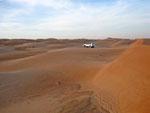
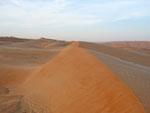
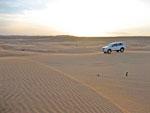
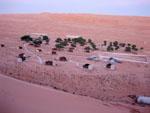
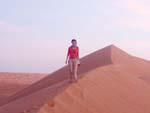
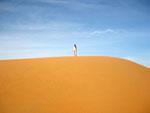
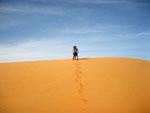
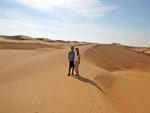
thydzikgooglemap(http://sonyaandtravis.com/maps/oman-2011-wahiba-sands.xml,s)
- 1000 Nights Camp




































































































